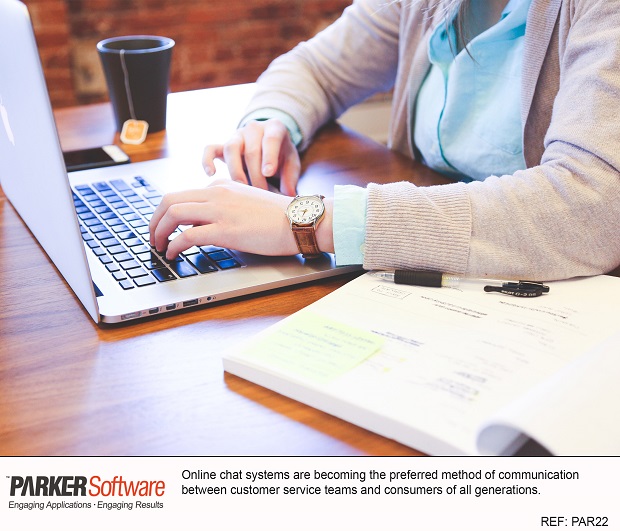Roll back a few years and I’m sure you wouldn’t be surprised if your grandma thought that a hashtag was some sort of gruesome disease. Nowadays, almost one in five Twitter users are aged over 50, and over 28 million seniors have a Facebook account. Add to that the fact that over 59 percent of seniors have made a digital purchase in the past three months, and you can clearly see why live chat software is no longer a tool for millennials alone. Howard Williams, marketing director of live chat provider Parker Software, explains.
Online chat systems are becoming the preferred method of communication between customer service teams and consumers of all generations, particularly as most people would prefer to go shopping on Christmas Eve or get their teeth cleaned at the dentist than call a customer service helpline.
We’ve all been there — waiting on hold for what seems like an eternity only for the person who finally picks up to say you’re through to the wrong department. It’s not hard to see why CIO.com reports that over 80 percent of people aged 18 to 65 say calling traditional customer service lines is inconvenient. That’s where real-time engagement support services, like Parker Software’s live chat tool WhosOn, come to the rescue.
Online tools are revolutionising the customer service experience for consumers of all ages. A recent poll by Desk.com showed that 56 percent of consumers would visit a brand’s website to look at the FAQs or access an online chat system if they had a question about a product or service, with one in three customers wanting to find the answer to their problem by themselves at home.
Live chat systems, like WhosOn, allow companies to simulate the experience customers find in-store. If online services are able to offer the same level of support as in-store representatives, consumers are more likely to make an immediate purchase and return for more — something particularly associated with brand-loyal older generations.
Research by Synchrony Financial demonstrates that baby boomer consumers (born 1943-1964) look for customer service representatives that are present, but not intrusive, with appropriate expertise. So, as a member of staff would do in a shop, live chat that employs some level of automation can put customers in touch with the appropriate person based on their browsing activity. This provides the increasingly tech-savvy generation with the type of service it expects and appreciates, encouraging brand loyalty.
The boomer generation is also the most willing to take to new digital customer service channels. According to Desk.com, 49 percent of boomers expect to interact with customer service teams via email, and 30 percent expect live video support to become standard practice.
It’s not just the baby boomer generation that is open to online customer services. Generation X (born 1965-1980) is the always-on-the-go, but always-online hybrid generation that has fully embraced online shopping. This group of consumers is brand-loyal by nature — if treated right. Nearly one quarter of Generation X-ers said they would not make a purchase from a brand if their preferred method of customer service interaction was not available to them. With nearly 30 percent choosing online chat (according to Desk.com), it is clear that this generation is embracing more digital avenues for its service needs.
It’s simple really, what would your mother or grandmother prefer? A supportive online chat when buying last minute Christmas gifts from the comfort of the sofa, or a fight over the last must-have toy on the shelves? It’s a no-brainer to us!
By Howard Williams
Marketing director
Parker Software

